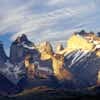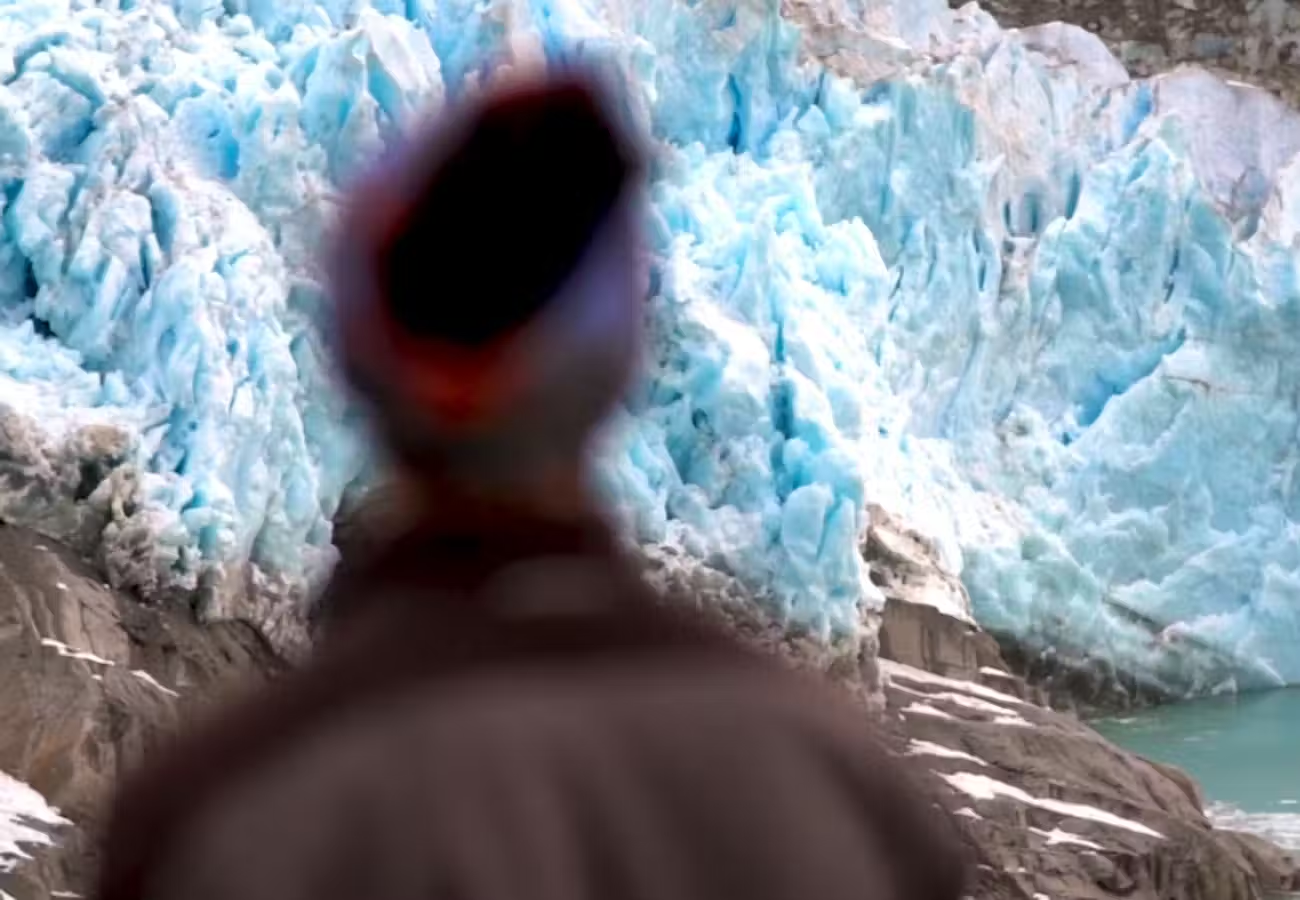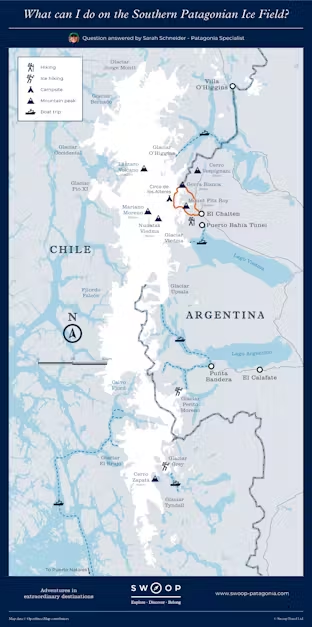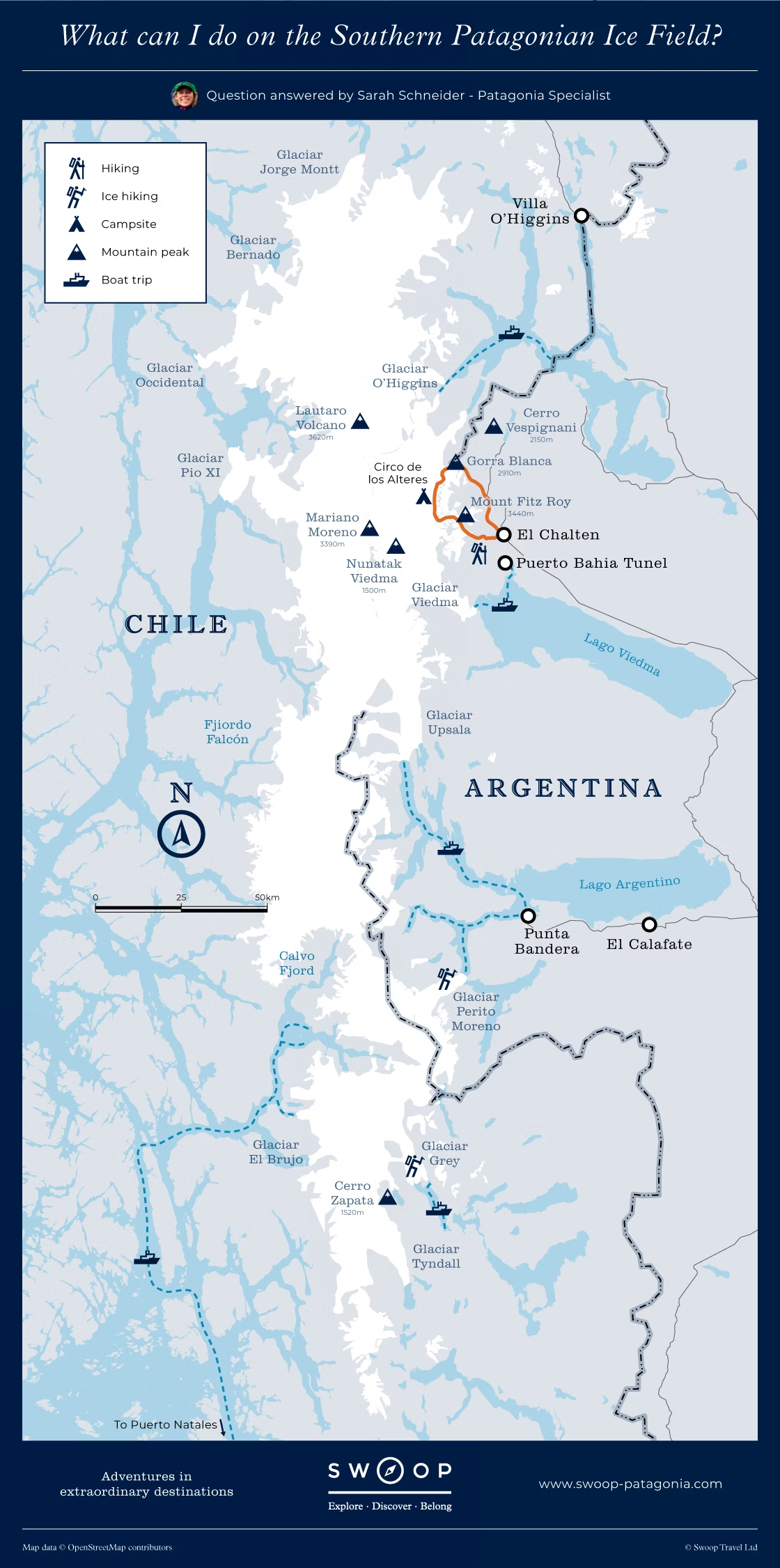Highlights of Patagonia's glaciers
- Trek to spectacular glacial views in Torres del Paine and Los Glaciares National Parks
- Strap on your crampons and get roped up to ice-hike across a glacier's crevasse-scarred surface
- Paddle by kayak or take a boat trip to the blue face of Perito Moreno, Patagonia's most famous glacier
- Cruise past icebergs formed by calving glaciers in the Chilean Fjords or the Magellan Straits
- Get remote among the wild glaciers of Aysen in the Northern Patagonian Ice Field
Introduction to Patagonia's glaciers
The Patagonian Ice Field is the largest mass of ice in the Southern Hemisphere outside Antarctica. The ice is locked up in the spine of the Andes, with glaciers flowing into Chile's jagged fjords on its western side and into a network of gigantic lakes on its eastern Argentinian side.
This enormous ice cube stretches for around 350km (215 miles) along the length of southern Patagonia and is constantly fed by wet Pacific weather falling as snow in the mountains. Like all ice masses around the world however, the Patagonia Ice Field remains a threatened environment, with climate change more than doubling the pace of glacial retreat. All but 2 of Chile's 26,000 glaciers are retreating, with a similar picture in Argentinian Patagonia. Ironically, one of the few that has remained stable is the famous Perito Moreno glacier, popular with visitors to Los Glaciares National Park.
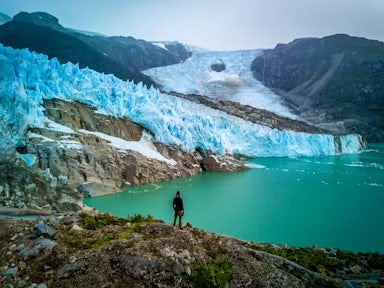
Leynoes Glacier in Aysen
Ways to explore Patagonia's glaciers
Hikes to Patagonia's glaciers

Glacier Grey in Torres del Paine
Patagonia's two most dramatic national parks offer brilliant opportunities for hikers to get up close to some of the glaciers in a wild and remote setting:
In Chile's Torres del Paine National Park, those hiking the 4-5 day W Trek will hike up the Valle Frances to see the dramatic French Glacier, a hanging glacier. You'll also hike towards the Glaciar Grey which is a 14 km glacier fed by the ice cap filling the wonderful Lago Grey. For the full icy experience, it's possible to strap on crampons and hike on the surface of the glacier.
Those hiking the longer Full Circuit (also known as the O Circuit) will also see the Perros Glacier in the north of the national park and enjoy the incredible views of the Grey Glacier and out to the Patagonian Ice Cap from the Paso John Garner.
In Argentina, the well-named Los Glaciares National Park is home to dozens of glaciers. For hikers, the best of these are accessed from the small mountain town of El Chalten which sits at the base of Mount FitzRoy. There are some wonderful day hikes up to the Torre Glacier and Glaciar Grande.
Those setting out on a multi-day trek can even get up to the wonderful Paso del Viento with its sweeping views out across the Patagonian Ice Cap itself. There is the opportunity to walk on the Marconi glacier, using ropes and crampons to negotiate its cracks and crevasses.
In Northern Patagonia, hikers can see the hanging Tronador ('thunder') glacier, so named because of the sound of the ice falling and crashing into the natural amphitheatre hundreds of metres below.
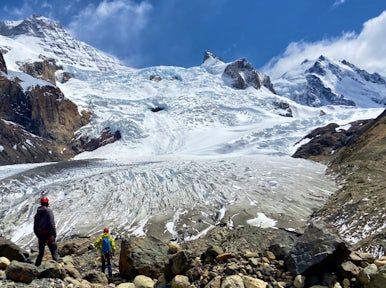
Cagliero Glacier in Los Glaciares National Park
Adventure cruises to Patagonia's glaciers

Glacier Cruise, Southern Patagonia
Many of Patagonia's glaciers are inaccessible by land and can only be seen from the water. Adventure cruises offer the opportunity to see one of nature's great spectacles: glaciers calving into the sea. Cruises on expedition vessels typically last 3–4 days. The ships vary in size and style, with the largest carrying just 200 passengers.
The Chilean Fjords in northern Patagonia offer some of the region's most dramatic glaciers. Navigation of these fjords is broken up by gentle hikes to great panoramas and a chance to learn more about the local wildlife, including the chance to see whales and penguins.
At the southern tip of Patagonia, the Magellan Straits in Tierra del Fuego offer its own 'Glacier Alley'. Many of the adventure cruises here take you through this part of the Beagle Channel, first visited by Charles Darwin in 1833. These trips give you a chance to get up close to the glaciers in small boats and to hike to dramatic viewing points.
Day trips to Patagonia's glaciers

Visit the (unmissable) Perito Moreno Glacier
Multi-day hikes aren't necessary to enjoy some of Patagonia's greatest glaciers. Many can be experienced on short day trips. In Argentina, several extraordinary glaciers are easily accessible from the hikers' haven of El Calafate, close to the mountains of Los Glaciares National Park.
Perito Moreno Glacier is deservedly the best known and most visited glacier in all of Patagonia. Its distinctive brilliant blue tongue pokes out into the waters of its lake, and can be readily explored by kayak, boat trip or short walks onto the ice.
Glaciar Upsala is even larger than Perito Moreno and can be visited together with a nearby Patagonian estancia from which you can go for a guided hike or 4x4 adventure into the mountains to panoramic viewpoints
Glaciar Spegazzini is accessible only by boat, visiting several of the glaciers of Lago Argentino. You'll weave between icebergs as you make your way to Spegazzini where you'll be dwarfed by its epic wall stretching over 130m above you.
From Puerto Natales it's possible to easily visit the glaciers of Torres del Paine - the most popular national park of Patagonia.
Glaciar Grey offers visitors all manner of ways to experience Torres del Paine at its most beautiful, whether on boat excursions right up to its face or an exciting taste of ice-hiking over its surface top with crampons. If you want to simply admire it from afar, you can remain on terra firma and trek around it to scenic viewpoints.
The Tyndall, Serrano and Balmaceda glaciers all offer a fantastic welcome to the national park. These are glaciers to be admired from the water, watching them glisten in the sun and listening to the cracks and groans of the ice as you pass them by kayak or boat.
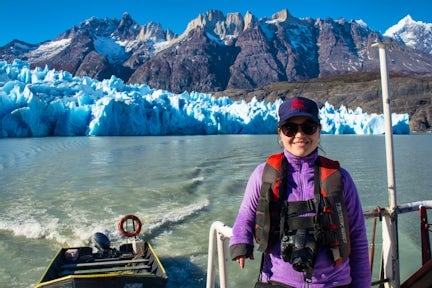
Grey Glacier
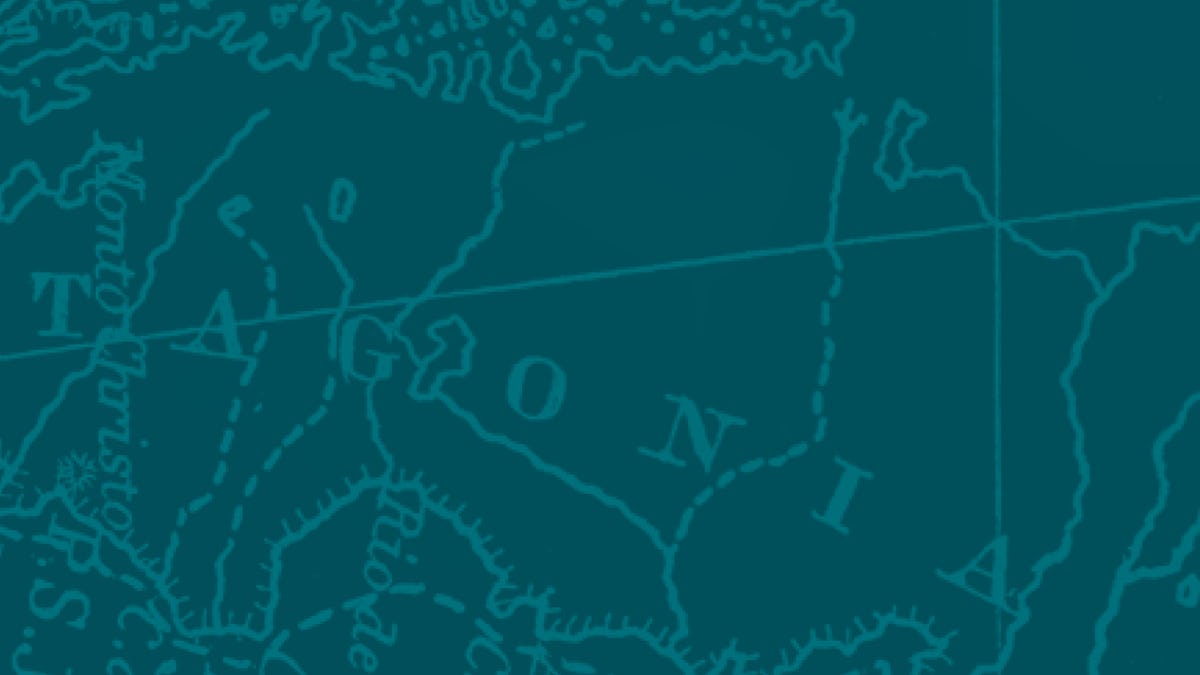

It is scarcely possible to imagine any thing more beautiful than the beryl-like blue of these glaciers... the channel with its icebergs presented, for the space of a mile, a miniature likeness of the Polar Sea.
Charles Darwin on sailing through the Beagle Channel
Exploring Patagonia's remote glaciers
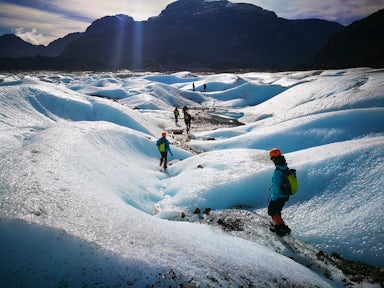
Exploradores Glacier in Aysen
For those wanting to get deep into the Patagonian wilderness and experience glaciers that few have seen, there are some tremendous options.
One of the most spectacular is the Glaciar O'Higgins on the northernmost tip of the Southern Patagonian Ice Field, near the wonderfully remote O'Higgins Crossing, and only accessible by boat.
Alternatively, you can choose to head to Chile's Aysen region, home to the smaller and less well-known Northern Patagonian Ice Field. Options here include the Lenoes Glacier, San Rafael, Calluquo, and Glaciar Exploradores off the rugged Carretera Austral highway, with its ice caves and hikes across its surface with crampons. Aysen is incredibly rich in glaciers (every valley seems to terminate in a hanging glacier), and while these are definitely off the beaten track, the region can easily be combined with the Chilean Fjords for an even bigger glacial hit.
Ice Field expeditions on Patagonia's glaciers
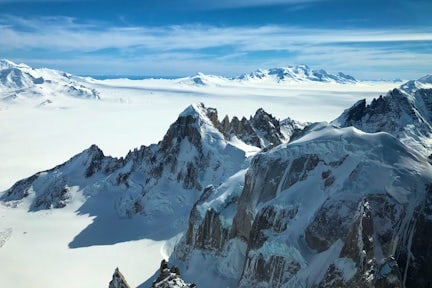
The Southern Patagonian Ice Field from the air
If you want the ultimate glacial experience, you can spend deep time trekking and camping on the ice fields themselves. Whilst you don't need technical expertise or experience you'll want plenty of resolve to face the extreme conditions that the Patagonian weather will throw at you. Our South Patagonian Ice Field Expedition gets you strapping on your crampons and roping up to deep into Argentina's Los Glaciares National Park at its most brilliantly wild.
What our customers think of Patagonia Glaciers
Ready to plan your Patagonia adventure?
Listen
We'll spend some time listening to your aspirations, then discuss the kind of experience that might suit you.
Match
Next we'll discuss the options, shortlist the best trips for you and present you our impartial recommendations.
Reserve
We'll place a 24 hour hold on your preferred option - without obligation - whilst we talk through the details.
Whatever your budget, group size, length of stay, preferred activity or appetite for adventure, we can help.
1 888 970 4571



